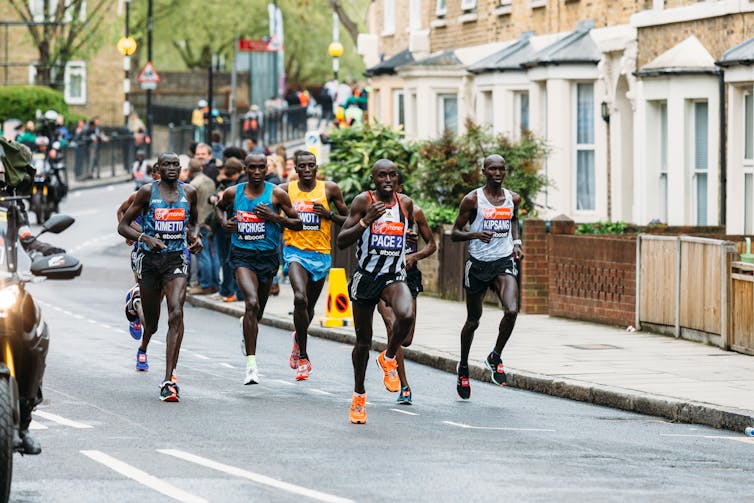It’s OK to Run Slowly: It Has Many Benefits

Runners are obsessed with time. Whether amateur or professional, for most avid runners the goal is to get faster by constantly training to knock at least a couple of seconds off their marathon or 5K record.
This contrasts with the trend run which has begun to gain momentum in recent years: slow runningor run slowly. The idea behind this flowing run is that everyone can—and should—run, regardless of their ability or running speed.
Proponents of this approach argue that it has many benefits, not only because of the health gains it provides, but also because of the pleasure that running at low speeds brings. What’s interesting is that recent research backs this up: There is scientific evidence that slow running may be in some ways more beneficial than higher-intensity workouts.
Run at a pace that allows you to talk
When we think of elite runners like Eliud Kipchoge or Kelvin Kiptum, we might assume that in order to break world records, they train primarily at a fast pace. Surprisingly, elite runners spend about 80% of their time training in what is called running zone 2. That is, a rhythm that gets your heart rate up but is still slow enough to carry on a conversation. So, only about 20% of your training is done in higher intensity zones closer to your actual running pace.
Because? The answer has to do with the stress that training puts on the body. As running speed increases, the load on the body increases. And the stronger this tension, the higher the risk of disease, infection and injury for a person. Hence the interest in limiting the time athletes spend training at high intensity.
The foundation must be strong
But this approach goes far beyond reducing the risk of injury and illness. A fundamental aspect of training is developing what is called the “base.” In the case of endurance runners, this refers to the physiological development of a basic cardiorespiratory state that serves as the starting point for developing adaptations to higher intensities.
Let’s think about a pyramid: it must have a solid foundation on which the rest of the structure is built. The larger the base, the higher the pyramid can be. The same goes for training: the better our foundation, the more ability we have to work at higher intensities.

Christian Teichner/Shutterstock
Slow running burns more fat and benefits your heart
Our core develops during slow running (zone 2), when physiological stress is relatively low. But even if the heart is not under much strain during a zone 2 race, the amount of oxygenated blood leaving the heart with each beat will reach (or remain close to reaching) its maximum possible volume. Higher intensities will not increase this ability. Thus, developing a strong core allows more oxygen per stroke to reach the moving muscles, which is critical to success during the race.
Not only that, but running at a slow pace also forces the body to use stored fat as an energy source instead of relying on stored carbohydrates from the food we eat. Burning fat is a much more metabolically efficient process, since the amount of energy obtained from one molecule of fat is much greater than the amount of one molecule of carbohydrates. This means that slow runners will expend less energy, experience less fatigue, and be more able to run fast on race day.
Research has shown that increases in VO2 max (oxygen capacity) and running speed are approximately 1% greater in athletes who spend more time running slowly. More importantly, the increase in aerobic base is approximately five times greater in slow runners compared to athletes who run more frequently at high intensity.
Even if we’re not professional athletes, trying to keep most of our runs at low intensity may still be the best option.
Slow and steady, allowing you to hum loudly without getting out of breath.
If you want to try running slowly, the most important thing is to choose the right pace. How do we know if we are moving at the right speed to be considered a slow race?
Some scientists divide running tempo into five or six different zones. Physiologically, zone 2 is defined as below the lactate threshold, which is the point at which lactate (the acid the body produces when it begins to burn carbohydrates for energy and is known to cause muscle soreness) begins to appear in the blood.
Simply put, it should be a speed at which we can still carry on a conversation and the heart rate is only about 70% of maximum. If we find it difficult to maintain a conversation, it is advisable to slow down the pace.
If we’re running alone, we can try singing out loud to ourselves. If we can do this without trying to catch our breath, we are in the right zone. If we find it difficult to breathe, it means we are moving at too high an intensity and lactate will begin to build up in our muscles, causing our legs to feel heavy.
Slow running has many benefits for both your body and mental health. So if you’ve always been shy about running slowly, maybe this will motivate you to strap on your running shoes and go for a run.